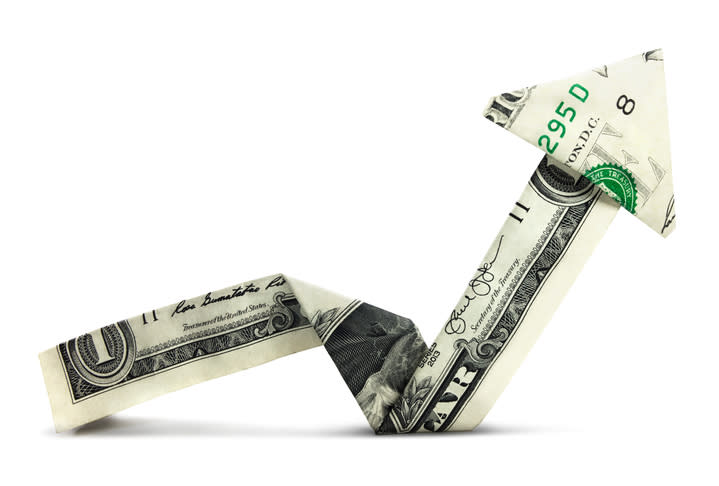2 Top Stocks You Can Buy and Hold for the Next Decade
The next decade will be the most important yet for renewable energy technologies. While the bulk of the headline-grabbing discussions today are a little heavy on the fire and brimstone, there's actually a lot of room for optimism if individual investors read the data with a level head. There are also quite a few above-average growth opportunities at hand.
For instance, electricity utility Xcel Energy (NASDAQ: XEL) operates four utilities in the coveted American Wind Corridor, which is home to some of the lowest-cost wind resources on the planet. That has helped it to rapidly decarbonize its power generation portfolio in recent years and become the first utility to publicly commit to 100% zero-carbon energy by midcentury. Meanwhile, Albemarle (NYSE: ALB) is already the world's largest supplier of lithium metals today, and it's racing to increase output several fold by 2025. That will make it one of the most important companies on the planet for tackling climate change.
That's a good start for each business. Here's a closer look at why you can buy and hold each stock for the next decade.

Image source: Getty Images.
Setting the standard for American electric utilities
Under the Paris Climate Accord, the United States pledged to voluntarily reduce its total carbon emissions 26% from 2005 levels by 2025. The power sector, which emits most of the country's total atmospheric pollution, achieved a 13% reduction from the benchmark through 2018. That's actually pretty impressive, but it pales in comparison to the decarbonization pace set by Xcel Energy.
The utility holding company has already cut carbon emissions 40% since 2005, and estimates it'll deliver an 80% reduction from the benchmark by 2030. It'll then spend the next two decades figuring out how to jettison natural gas from its portfolio and hit zero-carbon operations by midcentury. That's great news for shareholders, because, as it turns out, renewable energy is great for business.
Xcel Energy is committing to renewable energy because of the long-term benefits to its bottom line. Wind turbines and solar panels never need to be refueled after installation, and they don't create waste in the course of operations. That's expected to drive a remarkable shift in the financial profile of the business: Fuel expense will fall from 47% of a customer's bill in 2010 to just 25% in 2027. That will keep bills low, and free up generous amounts of capital to reinvest in the business.

Image source: Getty Images.
Investors can have confidence in this "Steel for Fuel" strategy because it's already worked. The share of Xcel Energy's power generation sourced from coal, natural gas, and nuclear (all of which require fuel inputs) has fallen from 91% in 2005 to just 75% today. The company expects that to drop to just 52% by 2027 -- promising to continue a long history of improving financial benefits.
Xcel Energy has grown earnings per share at a compound annual growth rate (CAGR) of 6.1% since 2005. It expects EPS to increase at a 5% to 7% annual clip through at least 2023. That will be catalyzed by over $20 billion in total capital investments to grow its rate base (the value of assets from which rates charged to customers are determined) in that span.
The incremental cash flow generated can be used to invest in new growth opportunities, including the recently teased idea of installing electric vehicle charging hardware for customers, or the also-recently teased idea of next-generation nuclear reactors. Xcel Energy also figures to continue growing its dividend, which has boasted a CAGR of 6.3% since 2013 and pays a current yield of 2.9%. Given all the growth potential, its ultra long-term commitment to zero-carbon electricity, and the fact shares trade at a respectable 20 times future earnings, this is a great stock to buy and hold in any portfolio.

Image source: Getty Images.
Racing to satiate global hunger for lithium
In 2015 Albemarle projected that the world would need 400,000 metric tons of lithium carbonate equivalent (LCE) per year by 2025. The latest estimate calls for as much as 1.2 million metric tons of LCE by the same year. The crazy error bar is the result of faster-than-expected adoption of hybrid and electric vehicles and the sooner-than-expected introduction of next-generation lithium-ion batteries.
It all points to an incredible growth opportunity for the world's largest lithium supplier. Indeed, Albemarle has embarked on an ambitious expansion effort in an attempt to meet the nearly insatiable appetite of its customers. The company exited 2018 with an annual production capacity of 65,000 metric tons of LCE, but that will swell to 170,000 metric tons of LCE by 2021.
And that will only be the beginning. A second wave of expansion in the early 2020s will boost annual production capacity to as much as 350,000 metric tons of LCE by 2025, 30% more than total global production today. Even more impressive, the company will own perhaps as much as 80% of the global market for lithium hydroxide, the most sought after lithium material by battery manufacturers.

Image source: Getty Images.
In addition to significantly increasing its mining output, Albemarle is positioning itself to become a go-to partner for battery manufacturers by developing the engineered materials that will be needed for next-generation lithium-ion batteries. The opportunity is sufficiently distant to be difficult to characterize in 2019, but it at least shows management is taking intriguing risks to maintain and diversify its leadership position in the lithium market.
Investors don't exactly have to take on much risk to see it through. Shares of Albemarle trade at just 12 times future earnings and a PEG ratio of 1.03 -- rather impressive for a nearly-$9 billion company. Furthermore, shares boast a dividend yield of 1.7% today, which could swell to impressive levels for investors that hold on for the next decade or more. This is easily one of the best renewable energy stocks to buy and hold in your portfolio.
More From The Motley Fool
Maxx Chatsko has no position in any of the stocks mentioned. The Motley Fool has no position in any of the stocks mentioned. The Motley Fool has a disclosure policy.

 Yahoo Finance
Yahoo Finance 